
Lyman Frank Baum was an American author best known for his children's fantasy books, particularly The Wonderful Wizard of Oz, part of a series. In addition to the 14 Oz books, Baum penned 41 other novels, 83 short stories, over 200 poems, and at least 42 scripts. He made numerous attempts to bring his works to the stage and screen; the 1939 adaptation of the first Oz book became a landmark of 20th-century cinema.
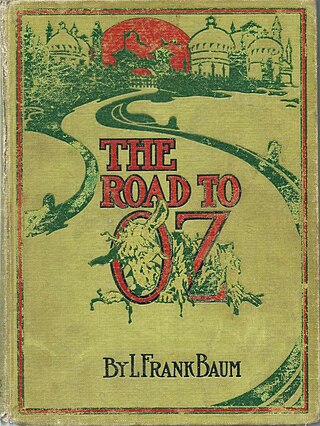
The Road to Oz is the fifth book in L. Frank Baum's Oz series. It was originally published on July 10, 1909 and documents the adventures of Dorothy Gale's fourth visit to the Land of Oz. It was followed by The Emerald City of Oz (1910).

The Tin Woodman of Oz: A Faithful Story of the Astonishing Adventure Undertaken by the Tin Woodman, Assisted by Woot the Wanderer, the Scarecrow of Oz, and Polychrome, the Rainbow's Daughter is the twelfth book in the Oz series written by L. Frank Baum and was originally published on May 13, 1918. The Tin Woodman is reunited with his Munchkin sweetheart Nimmie Amee from the days when he was flesh and blood. This was a back-story from Baum's 1900 novel, The Wonderful Wizard of Oz. It was followed by The Magic of Oz (1919).
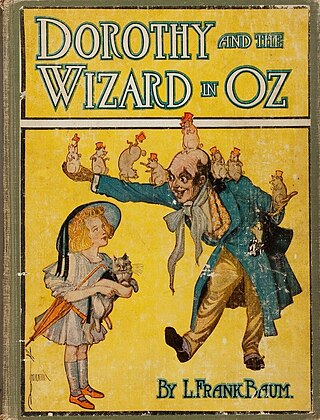
Dorothy and the Wizard in Oz is the fourth book set in the Land of Oz written by L. Frank Baum and illustrated by John R. Neill. It was published on June 18, 1908 and reunites Dorothy Gale with the humbug Wizard from The Wonderful Wizard of Oz (1900). This is one of only two of the original fourteen Oz books to be illustrated with watercolor paintings. It was followed by The Road to Oz (1909).

The Royal Book of Oz (1921) is the fifteenth book in the Oz series, and the first to be written after L. Frank Baum's death. Although Baum was credited as the author, it was written entirely by Ruth Plumly Thompson. It was followed by Kabumpo in Oz (1922).
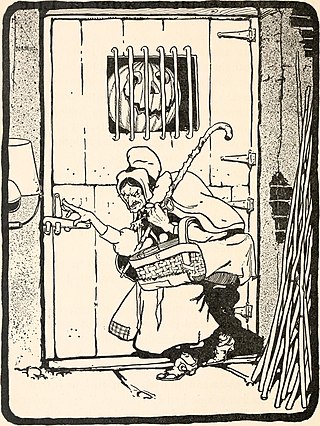
Mombi is a fictional character in L. Frank Baum's classic children's series of Oz Books. She is the most significant antagonist in the second Oz book The Marvelous Land of Oz (1904), and is alluded to in other works. Mombi plays a very important role in the fictional history of Oz.
The Shaggy Man is a character in the Oz books by L. Frank Baum. He first appeared in the book The Road to Oz in 1909.
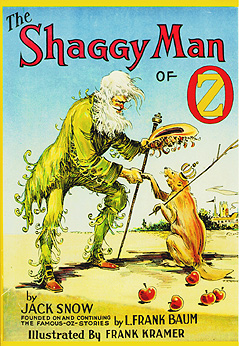
The Shaggy Man of Oz (1949) is the thirty-eighth book in the Oz series created by L. Frank Baum and his successors, and the second and last by Jack Snow. It was illustrated by Frank G. Kramer. The book was followed by The Hidden Valley of Oz (1951). The novel entered the public domain in the United States when its copyright was not renewed as required.

The Wonderful Wizard of Oz, also known as The Wizard of Oz, is a 1910 American silent fantasy film and the earliest surviving film version of L. Frank Baum's 1900 novel The Wonderful Wizard of Oz. The film was made by the Selig Polyscope Company without Baum's direct input. It was created to fulfill a contractual obligation associated with Baum's personal bankruptcy caused by the failure of his theatrical production The Fairylogue and Radio-Plays. It was partly based on the 1902 stage musical The Wizard of Oz, though much of the film deals with the Wicked Witch of the West, who does not appear in the musical.

The Fairylogue and Radio-Plays was an early attempt to bring L. Frank Baum's Oz books to the motion picture screen. It was a mixture of live actors, hand-tinted magic lantern slides, and film. Baum himself would appear as if he were giving a lecture, while he interacted with the characters. Although acclaimed throughout its tour, the show experienced budgetary problems and folded after two months of performances. It opened in Grand Rapids, Michigan on September 24, 1908. It then ran in Orchestra Hall in Chicago on October 1, toured the country and ended its run in New York City. There, it was scheduled to run through December 31, and ads for it continued to run in The New York Times until then, but it reportedly closed on December 16.

The Gingerbread Man is a fairy tale about a gingerbread man's misadventures while fleeing from various people that culminates in the titular character being eaten by a fox. "The Gingerbread Boy" first appeared in print in the May 1875, issue of St. Nicholas Magazine in a cumulative tale which, like "The Little Red Hen", depends on repetitious scenes featuring an ever-growing cast of characters for its effect. According to the reteller of the tale, "A girl from Maine told it to my children. It interested them so much that I thought it worth preserving. I asked where she found it and she said an old lady told it to her in her childhood."
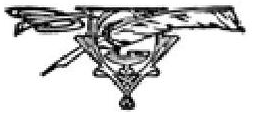
The Reilly and Britton Company, known after 1918 as Reilly & Lee, was an American publishing company of the early and middle 20th century, best known for children's and popular culture books from authors like L. Frank Baum and Edgar A. Guest. Founded in 1904 by two former employees of George M. Hill's publishing company, Frank Kennicott Reilly and Charles Sumner Britton. Reilly continued to lead the company until his death in 1932. Britton left the firm around 1916 to start a new company in New York, and for a time the company was guided by William F. Lee, who died in 1924. Following Reilly's death, Francis J. O'Donnell ran the company until it was acquired by the Henry Regnery Company in 1959.

John Dough and the Cherub is a children's fantasy novel, written by American author L. Frank Baum, about a living gingerbread man and his adventures. It was illustrated by John R. Neill and published in 1906 by the Reilly & Britton Company. The story was serialized in the Washington Sunday Star and other newspapers from October to December 1906. Like the Oz books but unlike many of the author's other works, John Dough was issued under Baum's name rather than one of his pseudonyms. The book was popular; as late as 1919 it was selling 1500 copies a year. The 1974 Dover Publications edition features an introduction by Martin Gardner.

The Ozmapolitan of Oz is a 1986 novel written and illustrated by Dick Martin. The novel is an unofficial entry in the long-running Oz series written by L. Frank Baum and various successors.

Aunt Jane's Nieces and Uncle John is a young adult novel written by L. Frank Baum, famous as the creator of the Land of Oz. It is the sixth volume in the ten-book series Aunt Jane's Nieces, Baum's greatest commercial success after the Oz books themselves. Like the other books in the series, this sixth volume was issued under the pen name "Edith Van Dyne," one of Baum's multiple pseudonyms.
"The Runaway Shadows, or A Trick of Jack Frost" is a twentieth-century fairy tale, a fantasy short story written by L. Frank Baum, famous as the creator of the Land of Oz. The story is one of a small cluster of Baum narratives that involve his fantasy land the Forest of Burzee and its exotic denizens. Arguably, Burzee constitutes Baum's second most important fantasy realm after Oz itself, being employed in his novels The Life and Adventures of Santa Claus (1902) and Queen Zixi of Ix (1905) and several of his short stories, and is referenced in The Road to Oz (1909).
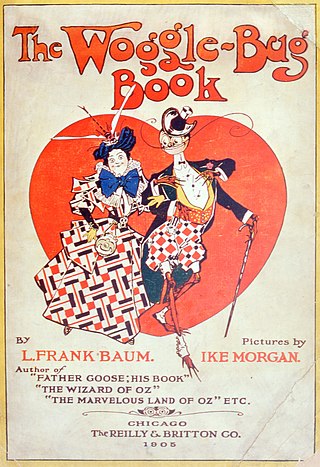
The Woggle-Bug Book is a 1905 children's book written by L. Frank Baum, creator of the Land of Oz, and illustrated by Ike Morgan. A spinoff from the Oz novels, it has long been one of the rarest items in the Baum bibliography. Baum's text has been controversial for its use of ethnic humor stereotypes.
This is a complete bibliography for American children's writer L. Frank Baum.














